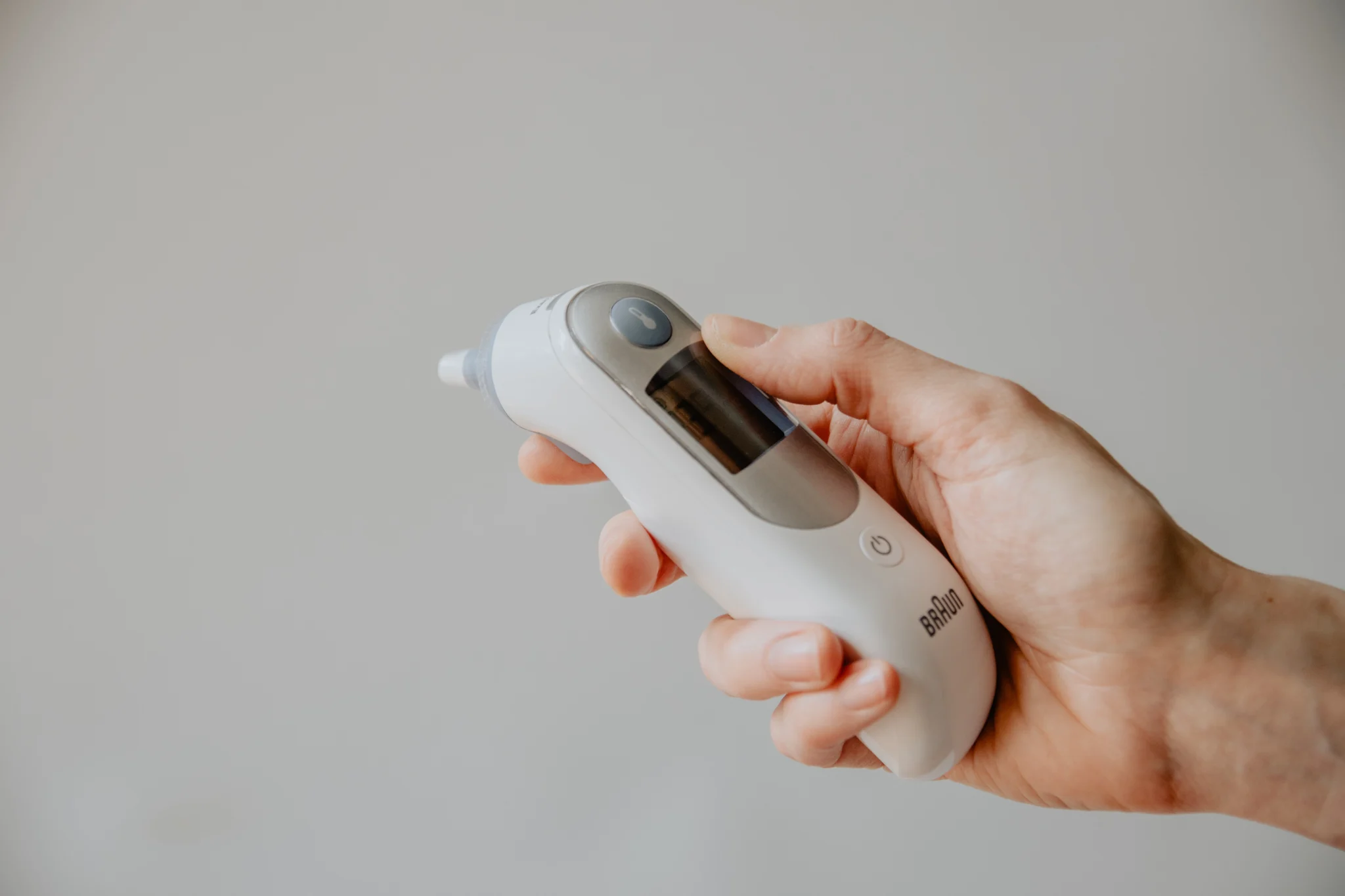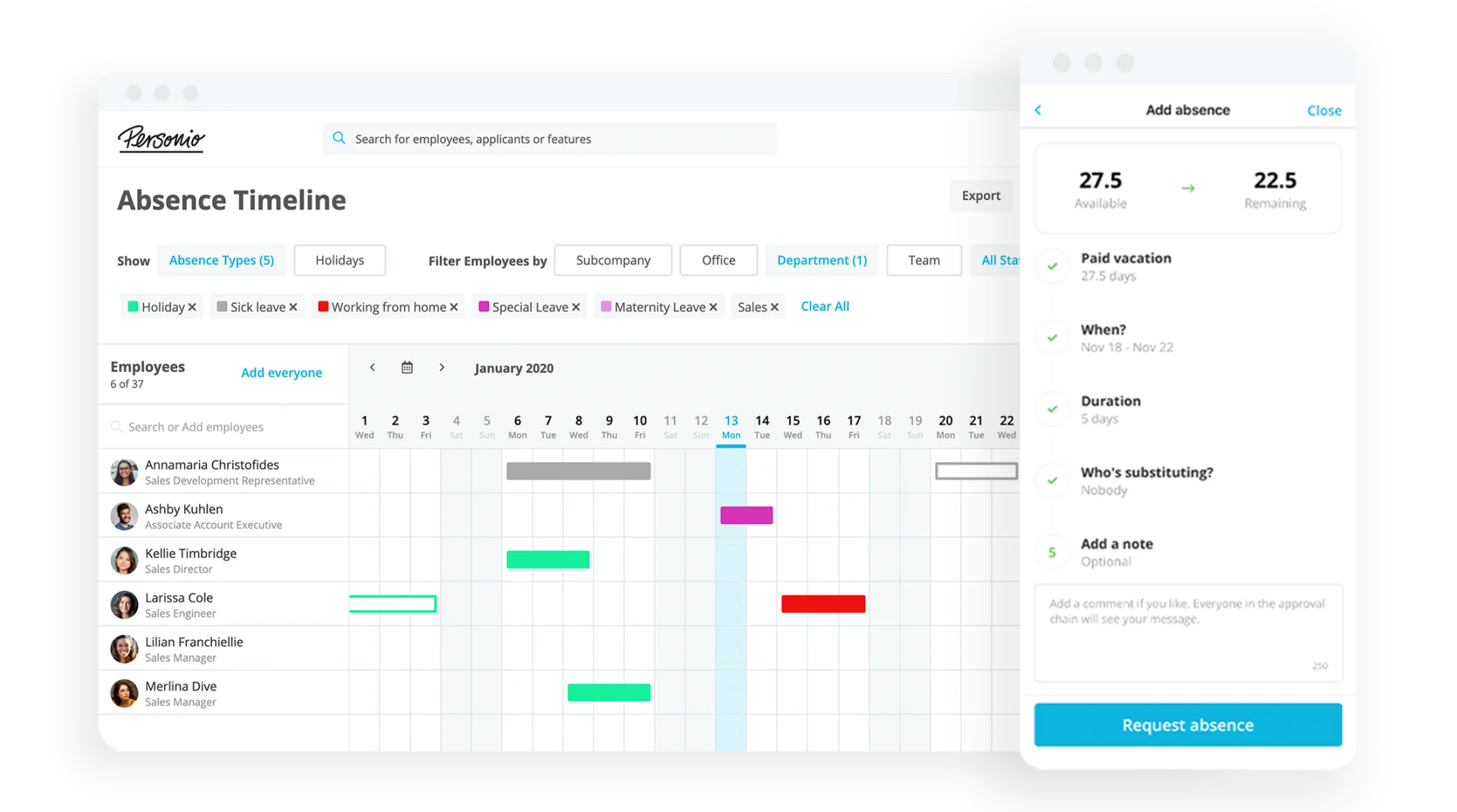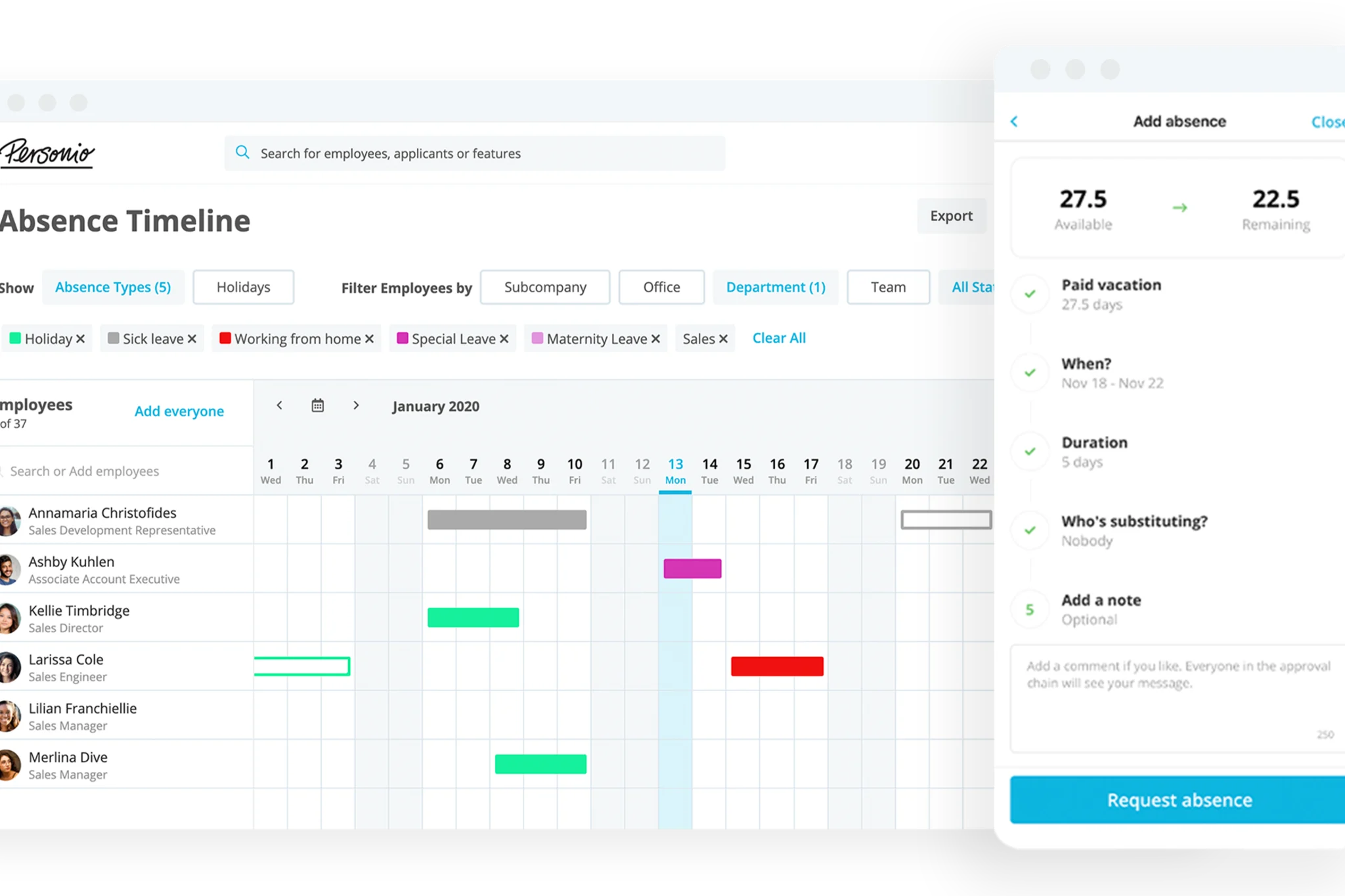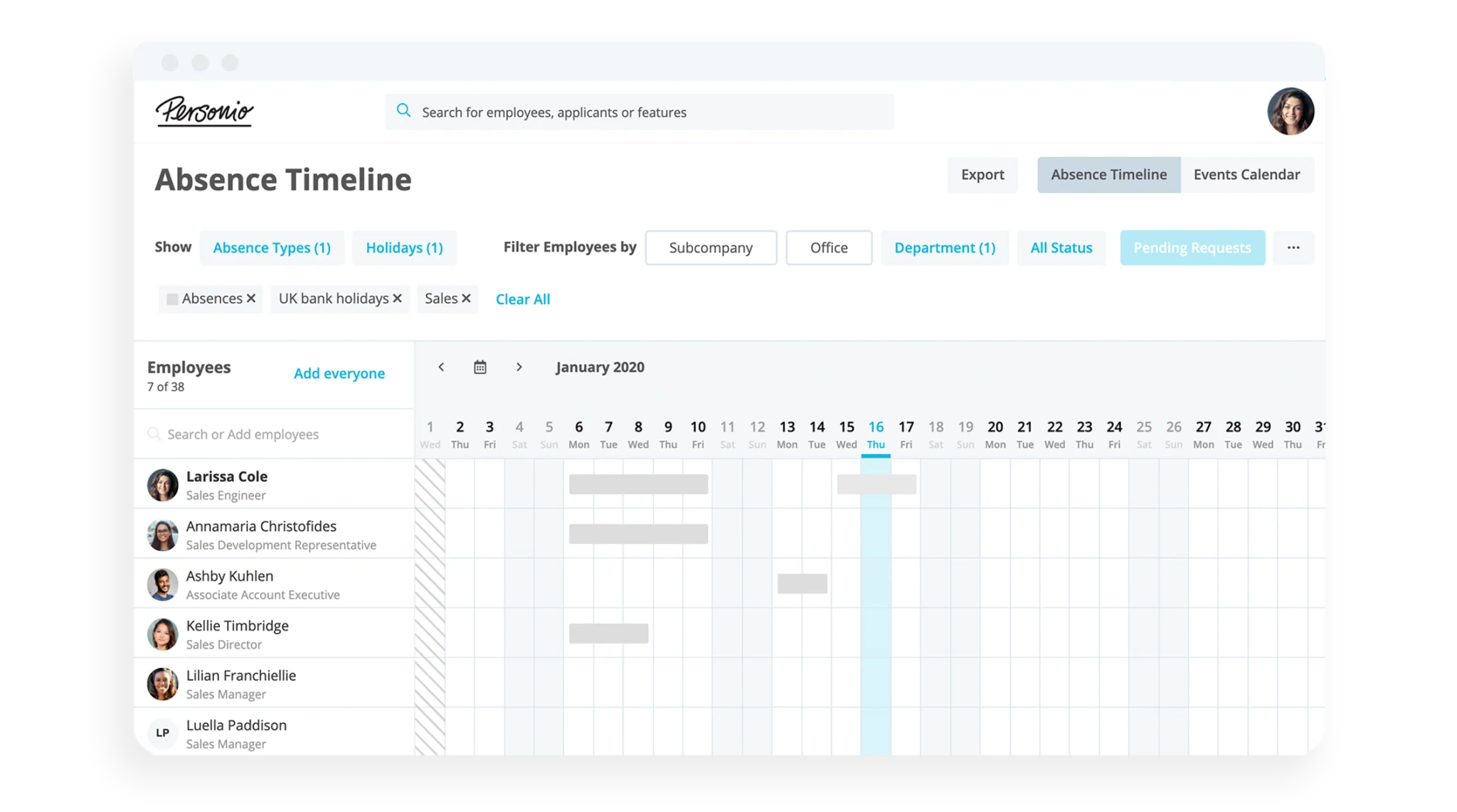The Complete Guide to Fit Notes for HR

Fit notes exist as an official way to keep track of when people are sick, and when they’re fit to return to work. In the UK, specifically, the government also has rules about how long people can be sick without proper documentation. In this article, we detail the full story on fit notes, when they are needed, and what HR should do with them.
Start tracking absences across your organisation with Personio today.
What is a Fit Note?
A fit note is a letter, issued by a doctor, for an employee when they have been sick for seven or more days. It both provides an explanation of illness and recommendations for an effective return to the work.
For example, an employee may be able to return to work to do light duties after a back injury, but the fit note may recommend that they don’t do any heavy lifting.
Also known as a GP note, doctor’s note or a sick note, the term ‘fit note’ is an informal name for a ‘Statement of Fitness for Work’.
Fits Notes & Phased Returns to Work
Fit notes can also recommend a phased return to work. This could be that an employee temporarily works different hours, that they perform different duties/tasks or suggestions that they may need other support to do their job.
Although the fit note may make recommendations about how the workplace should adapt, this is not mandatory. Although it is often in the employee’s short-term benefit and in the company’s long-term interest, employers do not need to make adjustments.
What Are the Rules for Fit Notes?
When it comes to fit note rules, employees only need a proper fit note when they have been sick and off work for seven days or more.
If an employee is absent from work due to illness for less than seven days, they don’t need a fit note. Instead, they can complete a form. This is called a self-certification. However, there is a bit of confusion about the timing and requirement of fit notes.
If the doctor thinks that someone is definitely fit for work after seven days, they will not be given a fit note. So it is possible that an employee may have been sick for seven days, go to see the doctor and not be issued with a fit note. In this case, the employee has done the right thing, and so has the doctor, but you won’t get a fit note for your records.
Ultimately, documenting absence is up to your company. For example, your sickness policy might stipulate that your employees have to provide medical evidence of illness for the first seven days of sickness absence. If you do, though, your company is responsible for arranging and paying for this.
What Is Included in the Seven-Day Rule?
The seven day rule doesn’t consist of seven working days. It covers all the days in a row when an employee was sick, including weekends and bank holidays. If an employee is sick for a period of seven days at any point – e.g. from the weekend before they started work until the Friday at the end of the week, or from a Tuesday to the following Monday, they need to get a fit note.
Note: Doctors are not allowed to provide a fit note before the seventh day of absence. Sometimes this means an employee might experience a delay between the seventh day and their doctor’s appointment. If this happens, the employee should explain the situation.
Do Employees Need a Fit Note if They’re Off Due to COVID or Self-Isolation?
No. But they must get an isolation note unless they feel well enough to work and can work from home. An isolation note is required if employees have COVID symptoms, have tested positive, live with someone who is ill or have tested positive and aren’t fully vaccinated, or have been told to self-isolate by a test and trace service or the NHS COVID-19 app.
You can find out more about isolation notes on the NHS website.
How Do Fit Notes Relate to Statutory Sick Pay (SSP)?
Statutory Sick Pay (SSP) kicks in when an employee has been sick for at least four days in a row (including weekends or bank holidays). Depending on your sickness policy, you can choose whether to pay employees for the first three days or not. However, once they have been sick for seven continuous days, they must get a sick note. This is a government requirement.
Fit notes are an important addition to any sick leave process and should be stored as evidence of an employee’s illness. For example, it might be helpful to refer to fit notes during an employee’s annual performance review if they’ve been absent a lot – particularly to see if there are issues you can help resolve.
Can Employees Go Back to Work Before the End Date on Their Fit Note?
Generally, yes. Unless a doctor indicates otherwise – but they should discuss this with you first. Sometimes you may need to perform a workplace risk assessment before an employee can come back to work, or make adjustments for them.
However, if a GP has said the employee should stay off work until the end of the period covered by the fit note, and the GP wants to see the employee again to check on their health, then they should not go back to work before the end date on their fit note.
Don’t forget that mental health at work is also something that may require employees to take a leave of absence, as is employee burnout. Both of these illnesses should be covered by your sickness or absence policy.
How Should Your Sickness Policy Account for Fit Notes?
While you can choose what to include in your sickness policy, you must include the requirement for a fit note after seven days of continuous sickness. That said, your policy can be more or less flexible about when an employee must return to work or not.
For example, you might decide to have a more generous policy or one that errs on the side of caution. In this case, you could prevent employees from returning to work before the end date.
UK law and guidance does not say you have to let employees return early or make them stay away – only that they need a sick note after seven days of continuous absence.
Checklist: Five Things to Do After Receiving a Fit Note
When an employee gives you a fit note, you should:
Check whether the doctor says they are fit to return to work or not.
Check the timing (how long the doctor has booked them off work and whether they will be fit to return at the end of this period or not).
Speak to your employee to help them get back to work safely and with compassion.
Use the fit note for any sick pay procedures if they’re not fit for work, or if you can’t make the doctor’s recommended changes they need to return to work.
Make and keep a copy of the fit note (the employee must keep the original).
How Should Your HR Function Handle Fit Notes?
Managing absences can be a bit of a cumbersome process. Documenting fit notes, days off, it all tends to add up – and fast. Absence management with Personio offers an easier way to track, record and store relevant documents from one single source of truth.
Book your own demo today to see it in action, or start a free trial to begin tracking absences in your organisation from today. Just don’t forget about the fit note!


